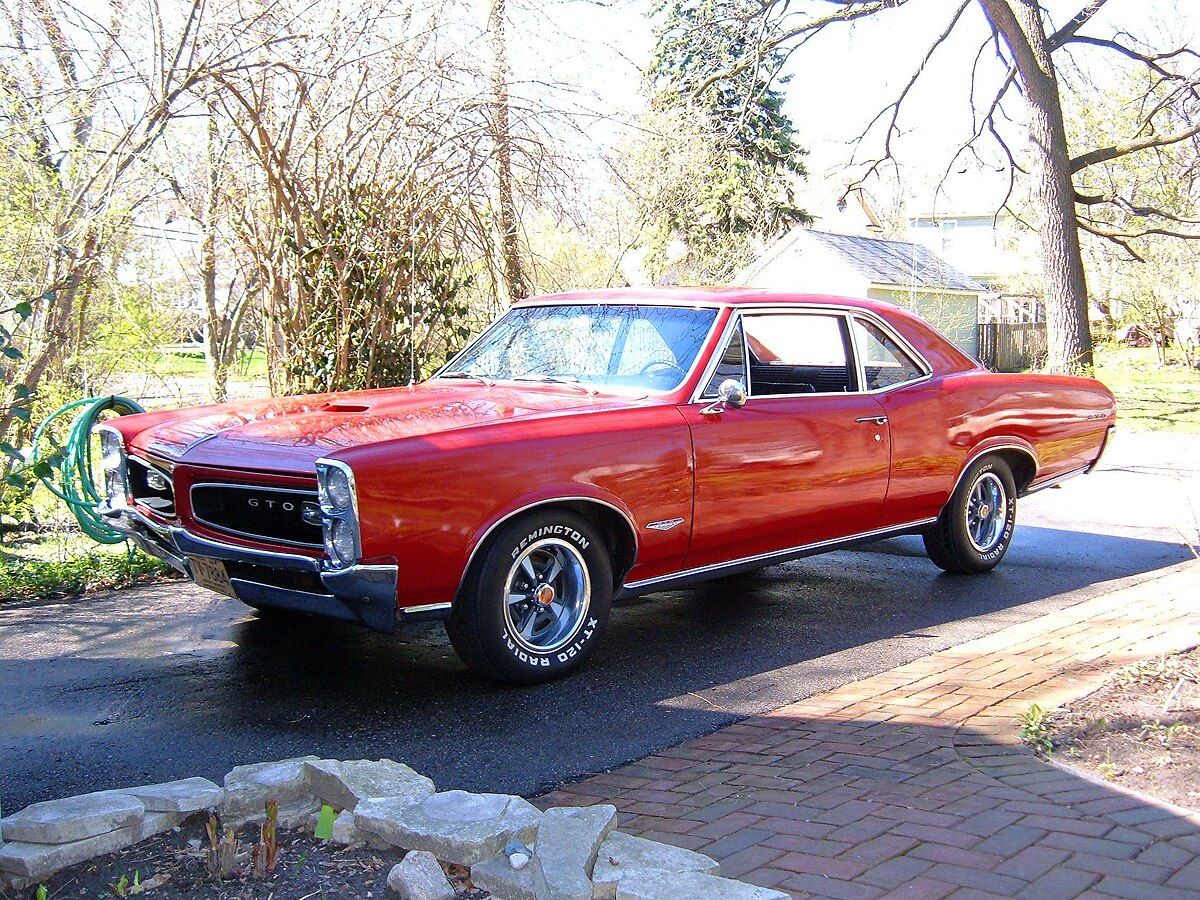
The roar of a well-tuned V8, the gleam of chrome reflecting the sun, the unmistakable silhouette of an era gone by – there’s an undeniable magic to classic cars. For many automotive enthusiasts, the dream of owning a piece of this history, of bringing a vintage machine back to its former glory, is a powerful one. However, this dream often comes with a common misconception: that classic car restoration is an undertaking reserved only for the wealthy or the highly specialized. It’s easy to imagine endless money pits, elusive parts, and years of frustrating work.
But what if we told you that the path to classic car ownership and restoration is more accessible and affordable than you might believe? The truth is, not all vintage vehicles demand a king’s ransom or require a team of highly specialized mechanics (though experts like those at Townsend’s Automotive in San Jose, with their passion for classic car repair work, are certainly invaluable for complex tasks from AC system overhauls to transmission rebuilds). For those eager to get their hands dirty, to learn some new skills in the garage, or simply to enjoy the process of revival, a specific category of classic cars stands out.
This article isn’t about those ultra-rare, concours-level showpieces that fetch millions. Instead, we’re focusing on the unsung heroes of the restoration world – the classic American cars, predominantly from the 1960s and 1970s, that offer an incredible blend of iconic style, robust engineering, and, crucially, a surprisingly affordable and manageable restoration experience. These vehicles were often produced in vast numbers, fostering a vibrant “rebuild culture” and ensuring a steady supply of both original stock and readily available aftermarket parts. So, prepare to be inspired as we rev up our engines and explore 15 awesome classic cars you can start working on yourself.

1. **Ford Mustang (1965 to 1970 era)**There’s simply no denying the Ford Mustang’s legendary status, and it rightfully claims a top spot on any list of accessible classic car restoration projects. From its electrifying debut in 1964, the Mustang captured the hearts of millions, becoming an instant icon. The models produced between 1965 and 1970 are particularly cherished, embodying the essence of American muscle and pony car appeal. Its widespread popularity wasn’t just a fleeting trend; it created a lasting legacy that makes restoration today surprisingly straightforward.
One of the greatest advantages of taking on a 1965 to 1970 Ford Mustang is the incredible availability of parts. Ford sold millions of these cars, and that means the market for original and reproduction components is robust. Whether you’re searching for an engine part, a piece of the interior, or body panels, you’ll find plenty of options, often at reasonable prices. This eliminates the dreaded “hard-to-find parts” dilemma that can plague other restoration projects, allowing you to focus on the enjoyable aspects of rebuilding.
The Mustang also benefits from a massive, enthusiastic restoration community. Online forums and dedicated groups are brimming with valuable resources, including detailed video tutorials and expert advice. This supportive network can guide you through every step, from minor repairs to a full-scale overhaul, ensuring you’re never alone in your endeavor. This strong community, combined with the readily available parts, makes the classic 60’s era ‘Stang an ideal choice for both novice restorers and seasoned gearheads looking for a rewarding project.
Furthermore, the Mustang offers a wide range of variations, providing ample opportunity for personalization. You can pursue a completely authentic restoration, aiming to bring the car back to showroom condition, or you can opt for personalized modifications. The possibilities for customization are vast, allowing you to truly make your Mustang your own while preserving its iconic heritage. Regardless of your approach, the 1965 to 1970 Ford Mustang promises an engaging and ultimately satisfying restoration journey.
Car Model Information: 2022 Ford Mustang GT Premium
Name: Ford Mustang
Caption: 2018 Ford Mustang GT 5.0
Aka: Ford T5 (Germany)
Manufacturer: Ford Motor Company
Production: March 1964 – present
ModelYears: 1965–present
Class: Unbulleted list
BodyStyle: Unbulleted list
Layout: Front-engine, rear-wheel-drive layout
Categories: 1970s cars, 1980s cars, 1990s cars, 2+2 coupés, 2000s cars
Summary: The Ford Mustang is an American automobile manufactured and marketed by Ford since 1964, as Ford’s longest nameplate in continuous production. Currently in its seventh generation, it is the fifth-best selling Ford car nameplate. The namesake of the “pony car” automobile segment, the Mustang was developed as a highly styled line of sporty coupes and convertibles derived from existing model lines, initially distinguished by its pronounced “long hood, short deck” proportions.
Originally predicted to sell 100,000 vehicles yearly, the 1965 Mustang became the most successful vehicle launch since the 1927 Model A. Introduced on April 17, 1964 (16 days after the Plymouth Barracuda), over 400,000 units were sold in its first year; the one-millionth Mustang was sold within two years of its launch. In August 2018, Ford produced the 10-millionth Mustang; matching the first 1965 Mustang, the vehicle was a 2019 Wimbledon White convertible with a V8 engine.
The success of the Mustang launch led to multiple competitors from other American manufacturers, including the Chevrolet Camaro and Pontiac Firebird (1967), AMC Javelin (1968), and Dodge Challenger (1970). It also competed with the Plymouth Barracuda, which was launched around the same time. The Mustang also had an effect on designs of coupes worldwide, leading to the marketing of the Toyota Celica and Ford Capri in the United States (the latter, by Lincoln-Mercury). The Mercury Cougar was launched in 1967 as a unique-bodied higher-trim alternative to the Mustang; during the 1970s, it included more features and was marketed as a personal luxury car.
From 1965 until 2004, the Mustang shared chassis commonality with other Ford model lines, staying rear-wheel-drive throughout its production. From 1965 to 1973, the Mustang was derived from the 1960 Ford Falcon compact. From 1974 until 1978, the Mustang (denoted Mustang II) was a longer-wheelbase version of the Ford Pinto. From 1979 until 2004, the Mustang shared its Fox platform chassis with 14 other Ford vehicles (becoming the final one to use the Fox architecture). Since 2005, the Mustang has used the D2C platform, unique to the Mustang.
Through its production, multiple nameplates have been associated with the Ford Mustang series, including GT, Mach 1, Boss 302/429, Cobra (separate from Shelby Cobra), and Bullitt, along with “5.0” fender badging (denoting 4.9 L OHV or 5.0 L DOHC V8 engines).
Get more information about: Ford Mustang
Buying a high-performing used car >>>
Brand: Ford Model: Mustang
Price: $38,956 Mileage: 21,117 mi.
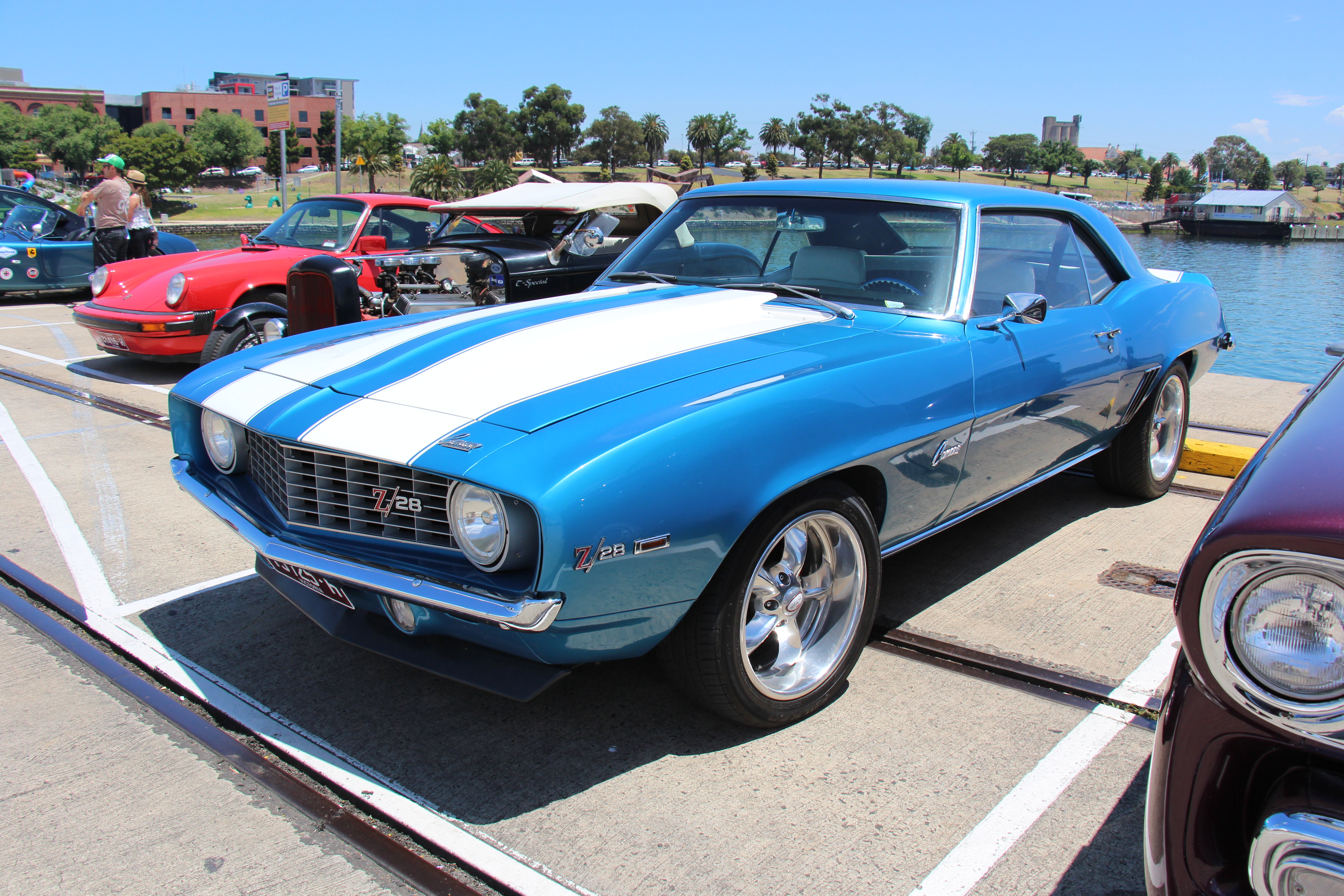
2. **Chevrolet Camaro (1967 to 1969 era)**Emerging as a formidable rival to the Mustang, the Chevrolet Camaro quickly carved out its own niche in the burgeoning pony car market, offering “Bow Tie” buyers a thrilling alternative. The models from the late 1960s, particularly the 1967 to 1969 iterations, are highly sought after and represent a golden era of American muscle. Their strong, iconic design and raw power have cemented their place as symbols of automotive excellence, making them incredibly appealing restoration candidates for enthusiasts worldwide.
Just like its Ford counterpart, the Chevrolet Camaro enjoys exceptional support within the classic car restoration community. This translates directly into a wealth of readily available parts, which is a critical factor in keeping restoration costs and frustrations down. Numerous companies offer full restoration kits that include virtually everything you might need, from essential components to colorful interior details, simplifying the process for both experienced and first-time restorers. This abundance of aftermarket parts means finding necessary components is rarely a hurdle.
The enduring popularity of the Camaro ensures that you won’t have to spend excessive time or money hunting for rare or hard-to-find components. Many parts are still in production, and specialized suppliers actively cater to the Camaro restoration market, guaranteeing a steady supply. This accessibility allows restorers to focus on the hands-on work, whether they’re aiming to bring the car back to its original glory or infuse it with personalized touches and modern upgrades.
Restoring a 1967 to 1969 Chevy Camaro is not just a project; it’s an immersion into a vibrant culture. The excitement and nostalgia that these cars evoke make the restoration process particularly rewarding. With a strong support network, comprehensive parts availability, and the opportunity for either authentic recreation or custom expression, a classic Camaro can offer years of driving enjoyment and stand as a lasting testament to automotive history.
Car Model Information: 2018 Chevrolet Camaro 1SS
Name: Chevrolet Camaro
Manufacturer: Chevrolet
Production: 1966–2002,2009–2023
ModelYears: 1967–2002,2010–2024
Class: Pony car
BodyStyle: coupe,convertible
Platform: GM F platform,GM Zeta platform,GM Alpha platform
Layout: Front-engine, rear-wheel-drive layout
Categories: 1970s cars, 1980s cars, 1990s cars, 2+2 coupés, 2000s cars
Summary: The Chevrolet Camaro is a mid-size American automobile manufactured by Chevrolet, classified as a pony car. It first went on sale on September 29, 1966, for the 1967 model year and was designed to compete with the Ford Mustang. The Camaro shared its platform and major components with the Firebird, produced by General Motors’ Pontiac division that was also introduced for the 1967 model year.
Four distinct generations of the Camaro were developed before production ended in 2002. The nameplate was revived on a concept car that evolved into the fifth-generation Camaro; production started on March 16, 2009.
Production of the sixth generation of the Camaro ended in December 2023, for the 2024 model year.
Get more information about: Chevrolet Camaro
Buying a high-performing used car >>>
Brand: Chevrolet Model: Camaro
Price: $33,988 Mileage: 49,199 mi.
Read more about: Beyond the Obvious: Uncovering 14 Overlooked Classic Cars Poised for Significant Investment Growth in 2025 and Beyond

3. **Pontiac Firebird (including 1977 Trans Am)**The Pontiac Firebird, especially its more performance-oriented Trans Am variant, is another fantastic option for those looking to restore a classic American muscle car without breaking the bank. Whether you’re eyeing an F-Body from the 1970s or an early 1980s Trans Am model, there’s a wide array of options available for enthusiasts to make their own. The Trans Am, particularly the 1977 model made famous by movies like *Smokey and the Bandit*, holds a special, thrilling place in the hearts of Generation X, representing an era of speed and adventure.
One of the most appealing aspects of restoring a Pontiac Firebird, especially the 1977 Trans Am, is the remarkable availability of parts. Despite these cars being several decades old, finding replacement components is surprisingly easy, thanks to a very strong and active online community of Trans Am enthusiasts. This network serves as an invaluable resource, connecting restorers with original components or high-quality aftermarket upgrades, ensuring that virtually everything needed to restore the car to its former glory can be sourced.
The vibrant Trans Am community extends beyond just parts; it’s a hub of support and shared knowledge. Online forums, social media groups, and dedicated websites provide a wealth of advice, tips, and solutions from fellow owners and restorers. This collective wisdom makes tackling a Firebird restoration significantly less daunting, whether you’re a novice embarking on your first project or an experienced enthusiast looking for fresh insights. This robust support system is a key factor in making the restoration process manageable and enjoyable.
While the Trans Am model is traditionally the more desirable version, and therefore might command a higher initial investment, earlier and less collectible Firebird models also present excellent opportunities. These can often be picked up for a smaller initial outlay, and parts availability remains strong across the range. Ultimately, a Firebird restoration offers a thrilling ride back to the exciting days of the 70s and 80s, providing a distinctive and powerful classic that is both rewarding to work on and exciting to drive.
Car Model Information: 1985 Pontiac Firebird
Name: Pontiac Firebird
Caption: The second, third, and fourth generations of,the Pontiac Firebird Trans Am
Manufacturer: Pontiac (automobile)
Production: February 23, 1967 – August 30, 2002
ModelYears: 1967 – 2002
Class: Pony car,Muscle car
Platform: GM F platform
Related: Chevrolet Camaro
Layout: Front engine, rear-wheel-drive layout
Categories: 1970s cars, 1980s cars, 1990s cars, 2000s cars, All articles with dead external links
Summary: The Pontiac Firebird is an American automobile built and produced by Pontiac from the 1967 to 2002 model years. Designed as a pony car to compete with the Ford Mustang, it was introduced on February 23, 1967, five months after GM’s Chevrolet division’s platform-sharing Camaro. This also coincided with the release of the 1967 Mercury Cougar, Ford’s upscale, platform-sharing version of the Mustang.
The name “Firebird” was also previously used by GM for the General Motors Firebird series of concept cars in the 1950s.
Get more information about: Pontiac Firebird
Buying a high-performing used car >>>
Brand: Pontiac Model: Firebird
Price: $23,500 Mileage: 12,209 mi.
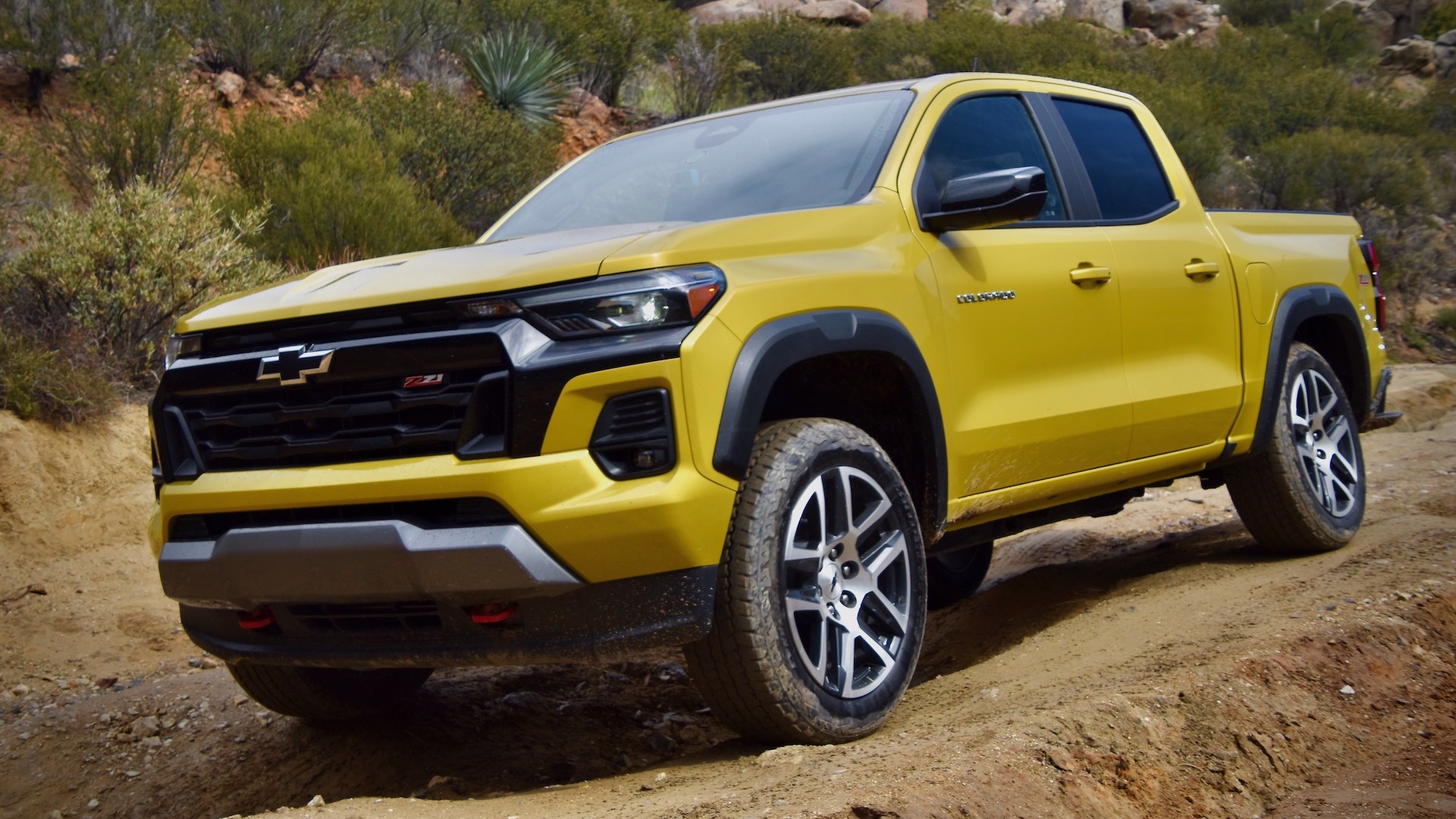
4. **Chevy Chevelle (1971 era)**It’s almost a given to encounter an SS Chevelle at any car show, often boasting a formidable big block engine under its hood. This omnipresence isn’t just a testament to its iconic styling; it also signals that the Chevy Chevelle, particularly the 1971 model, is an exceptionally good car to acquire and restore. Its sleek design and powerful performance have cemented its status as a standout in automotive history, making it a perennial favorite for collectors and restorers alike.
The accessibility of parts is a major draw for the Chevelle. The aftermarket for Chevy small-block and big-block engines is virtually endless, providing restorers with an unparalleled selection of components. This extensive supply ensures that whether you’re a first-time restorer or a seasoned mechanic, you can find everything needed to rebuild a Chevelle without incurring excessive costs or frustrating delays. This makes it an outstanding choice for those operating within a restoration budget.
Beyond mechanical parts, the Chevelle also offers fantastic opportunities for body and interior restoration. Many enthusiasts choose to meticulously restore their 1971 Chevelle to its original factory condition, preserving its authentic look and feel. However, the Chevelle also lends itself beautifully to creative customization, allowing owners to personalize their build with unique pinstriping, updated interiors, or even performance enhancements. The sheer versatility makes the restoration process both enjoyable and deeply rewarding.
With a robust community of resources and online groups dedicated to Chevelle restorations, guidance and support are always within reach. This collective knowledge, combined with the widespread availability of parts and the endless customization options, makes the 1971 Chevrolet Chevelle a truly excellent car to restore. It’s a project that allows you to preserve an iconic piece of automotive history while infusing it with your personal touch, guaranteeing a head-turning vehicle that offers years of enjoyment.

5. **Oldsmobile Cutlass (1968 to 1972 era)**The Oldsmobile Cutlass, particularly the models from 1968 to 1972, holds a significant place in U.S. automotive history as one of the best-selling cars of its time. This success wasn’t accidental; the Cutlass masterfully blended classic style with luxurious features, appealing to a broad spectrum of buyers. While the 4-4-2 may be a bit higher on the “legendary” status list, the standard Cutlass is an often-underappreciated vehicle that can still be found in decent shape, offering a fantastic opportunity for restoration.
A key factor that makes the Oldsmobile Cutlass so appealing for restoration projects is its versatility and the abundance of available parts. Being a GM A-body platform car, it shares many components with other popular General Motors vehicles of the era, which means parts are in wide supply. Whether you’re looking for original components or quality aftermarket replacements, you can easily find what you need to bring the car back to life, making the process smoother and more cost-effective.
The production run of the Cutlass included various body styles, colors, and interior options, which translates into immense freedom for restorers. You can choose to faithfully adhere to the original specifications, meticulously recreating its vintage charm, or embark on a more creative path with a customized build. The option to make a 455-cubic-inch engine roar once again is certainly a powerful incentive for many, offering a blend of performance and classic appeal.
For both beginners and seasoned restorers, the 1968 to 1972 Oldsmobile Cutlass presents a fantastic choice. Its stylish design, luxurious features, and the vast potential for customization mean you can create a vehicle that not only honors its original design but also perfectly reflects your personal taste and vision. This car offers a rewarding restoration experience that results in a timeless classic, ready to be enjoyed for years to come.
Car Model Information: 1972 Oldsmobile Cutlass
Caption: 1971 Oldsmobile Cutlass Supreme Convertible
Name: Oldsmobile Cutlass
Manufacturer: Oldsmobile
Production: 1961–1999
Successor: Oldsmobile Intrigue
Class: Compact car
Categories: 1970s cars, 1980s cars, 1990s cars, All Wikipedia articles needing clarification, All articles that may contain original research
Summary: The Oldsmobile Cutlass was a series of automobiles produced by General Motors’ Oldsmobile division between 1961 and 1999. At its introduction, the Cutlass was Oldsmobile’s entry-level model; it began as a unibody compact car, but saw its greatest success as a body-on-frame intermediate. The Cutlass was named after Vought F7U Cutlass, as well as the type of sword, which was common during the Age of Sail.
Introduced as the top trim level in Oldsmobile’s compact F-85 Series, the Cutlass evolved into a distinct series of its own, spawning numerous variants. These included the 4-4-2 muscle car in 1964, the upscale Cutlass Supreme in 1966, the high-performance Hurst/Olds in 1968, and the Vista Cruiser station wagon.
By the 1980s, Oldsmobile was using the Cutlass as a sub-marque, with numerous vehicle lines bearing the name simultaneously. The compact Cutlass Calais, midsize Cutlass Ciera, Cutlass Cruiser station wagon, and flagship midsize Cutlass Supreme were among the models available during this time.
In the 1990s, Oldsmobile began moving away from its traditional model lines, with other legacy vehicle nameplates like the 98 and 88 being discontinued in 1996 and 1999, respectively. The Cutlass name was likewise retired in 1999 in favor of the all-new Oldsmobile Alero, ending nearly 40 years of continuous Cutlass production.
Get more information about: Oldsmobile Cutlass
Buying a high-performing used car >>>
Brand: Oldsmobile Model: Cutlass
Price: $41,990 Mileage: 20,500 mi.

6. **Pontiac GTO (1970-71 models)**Widely hailed as America’s “first true muscle car,” the Pontiac GTO is an enduring icon that continues to capture the imagination of automotive enthusiasts. While many examples are still cruising the roads, a good number also reside in garages and barns, patiently waiting for a passionate restorer to bring them back to life. For those looking to dive into a GTO project, the 1970-71 models often represent the sweet spot, offering an excellent balance of iconic status and a more attainable entry point compared to some of the more intensely sought-after years.
The allure of the GTO lies not just in its powerful heritage but also in its surprising accessibility for restoration. Given its historical significance and the strong fan base it commands, there’s a healthy market for both original and aftermarket parts. While perhaps not as ubiquitous as Mustang or Camaro parts, components for the GTO are generally well-supported, particularly for the more common mechanical and body elements. This means you can get a good amount of power underneath the hood without the frustrating hunt for elusive pieces.
Restoring a GTO allows you to connect directly with a pivotal moment in American automotive history. These cars embodied a cultural shift, bringing high-performance engines into mainstream production vehicles. The process of bringing one of these machines back to its prime is an exercise in preserving that legacy, providing a deep sense of satisfaction. Whether you’re meticulously recreating a factory-correct showpiece or subtly enhancing its performance for modern driving, the GTO responds beautifully to a restorer’s touch.
The decision to restore a 1970-71 GTO is a smart one for value-conscious enthusiasts. These particular model years often provide the most “bang for your buck,” offering substantial muscle car presence without the astronomical price tags associated with earlier, rarer versions. It’s a chance to own and rebuild a genuine legend, a car that will always command respect and admiration, proving that true muscle car passion doesn’t always have to come with an exorbitant restoration cost.
Car Model Information: 1966 Pontiac GTO Coupe
Name: Pontiac GTO
Caption: 2005 Pontiac GTO
Manufacturer: Pontiac (automobile),Holden
Class: Mid-size car,Compact car,Mid-size car
Production: 1963–1974,2003–2006
Predecessor: Pontiac Tempest
Layout: Front-engine, rear-wheel-drive layout
ModelYears: 1964-1974 2004-2006
Categories: 1970s cars, 2000s cars, All articles with unsourced statements, Articles with short description, Articles with unsourced statements from October 2008
Summary: The Pontiac GTO is a front-engine, rear-drive, two-door, and four-passenger automobile manufactured and marketed by the Pontiac division of General Motors over four generations from 1963 until 1974 in the United States — with a fifth generation made by GM’s Australian subsidiary, Holden, for the 2004 through 2006 model years.
The first generation of the GTO is credited with popularizing the muscle car market segment in the 1960s. Some consider the Pontiac GTO to have started the trend with all four domestic automakers offering a variety of competing models.
For the 1964 and 1965 model years, the GTO was an optional package on the intermediate-sized Pontiac LeMans. The 1964 GTO vehicle identification number (VIN) started with 22, while the 1965 GTO VIN began with 237. The GTO was designated as a separate Pontiac model from 1966 through 1971 (VIN 242…). It became an optional package again for the 1972 and 1973 intermediate LeMans. For 1974, the GTO was an optional trim package on the compact-sized Ventura.
The GTO model was revived for the 2004 through 2006 model years as a captive import for Pontiac, a left-hand drive version of the Holden Monaro, itself a coupé variant of the Holden Commodore.
Get more information about: Pontiac GTO
Buying a high-performing used car >>>
Brand: Pontiac Model: GTO
Price: $59,991 Mileage: 4,408 mi.

7. **Chevy El Camino SS (1970 era)**If you’re seeking a restoration project that truly stands out from the crowd, something with a unique blend of utility and muscle, then the Chevrolet El Camino SS, particularly the 1970 model, is an excellent choice. In an era when buyers typically chose between a station wagon or a pickup truck, the El Camino offered a captivating third option: a vehicle that was part car, part truck, and thoroughly impressive. Its distinctive design, featuring a truck bed seamlessly integrated into a sleek car body, made it an icon of its time and continues to turn heads today.
The early 1970s marked a prime period for these vehicles, with the SS versions being among the most coveted. Restoring a 1970 El Camino SS is not merely fixing an old car; it’s reviving a distinctive historical moment, a bold and unconventional design statement that broke the mold. The process allows you to recreate the excitement and uniqueness that this vehicle generated upon its initial release, making it a profoundly rewarding endeavor for any classic car enthusiast.
Thanks to the El Camino’s shared platform with other popular Chevy A-body machines, swapping out parts under the hood is often a much easier affair than one might expect. The availability of reproduction and aftermarket parts has significantly streamlined the restoration process, making it more affordable and less challenging. Whether you need to replace engine components, interior pieces, or even many body parts (though exterior parts specific to the El Camino’s unique rear might require a bit more searching), you’ll find a good selection.
The 1970 Chevrolet El Camino SS is an exciting and accessible restoration project for those who appreciate classic cars with a distinctive flair. Its unique look, combined with reasonable parts availability and the opportunity to celebrate a truly innovative automotive concept, makes it a perfect choice for fans of 70s-era vehicles. It’s a car that truly stands out, and restoring one offers the satisfaction of bringing back an iconic, versatile piece of automotive history.
Continuing our exploration into the surprisingly accessible realm of classic car restoration, we delve into eight more exceptional models that prove the dream of owning and rebuilding a vintage vehicle is well within reach for dedicated enthusiasts. This next selection broadens our view, encompassing everything from foundational American hot rods and distinctive muscle machines to a couple of surprisingly manageable imports that offer unique restoration journeys without demanding an exorbitant investment. Each car on this list boasts characteristics that make it a compelling and practical choice for anyone eager to get their hands dirty and bring automotive history back to life, emphasizing their enduring charm, robust community backing, and the tangible satisfaction they provide to aspiring restorers.
Car Model Information: 2025 Volkswagen Atlas 2.0T SE w/Technology
Name: Chevrolet El Camino
Caption: 1969 El Camino SS
Manufacturer: Chevrolet
ModelYears: 1959–1960 ,1964–1987
Layout: Front-engine, rear-wheel-drive layout,rear-wheel drive
Class: Coupé utility,Muscle car
Categories: 1960s cars, 1970s cars, 1980s cars, All articles lacking reliable references, All articles needing additional references
Summary: The Chevrolet El Camino is a coupé utility vehicle that was produced by Chevrolet between 1959–1960 and 1964–1987. Unlike a standard pickup truck, the El Camino was adapted from the standard two-door Chevrolet station wagon platform and integrated the cab and cargo bed into the body.
Introduced in the 1959 model year in response to the success of the Ford Ranchero coupé utility, its first run, based on the Biscayne’s B-body, lasted only two years. Production resumed for the 1964–1977 model years based on the Chevelle platform, and continued for the 1978–1987 model years based on the GM G-body platform.
Although based on corresponding General Motors car lines, the vehicle is classified in the United States as a pickup. GMC’s badge engineered El Camino variant, the Sprint, was introduced for the 1971 model year. Renamed Caballero in 1978, it was also produced through the 1987 model year.
Get more information about: Chevrolet El Camino
Buying a high-performing used car >>>
Brand: Chevrolet Model: El Camino SS
Price: $49,364 Mileage: 4,648 mi.
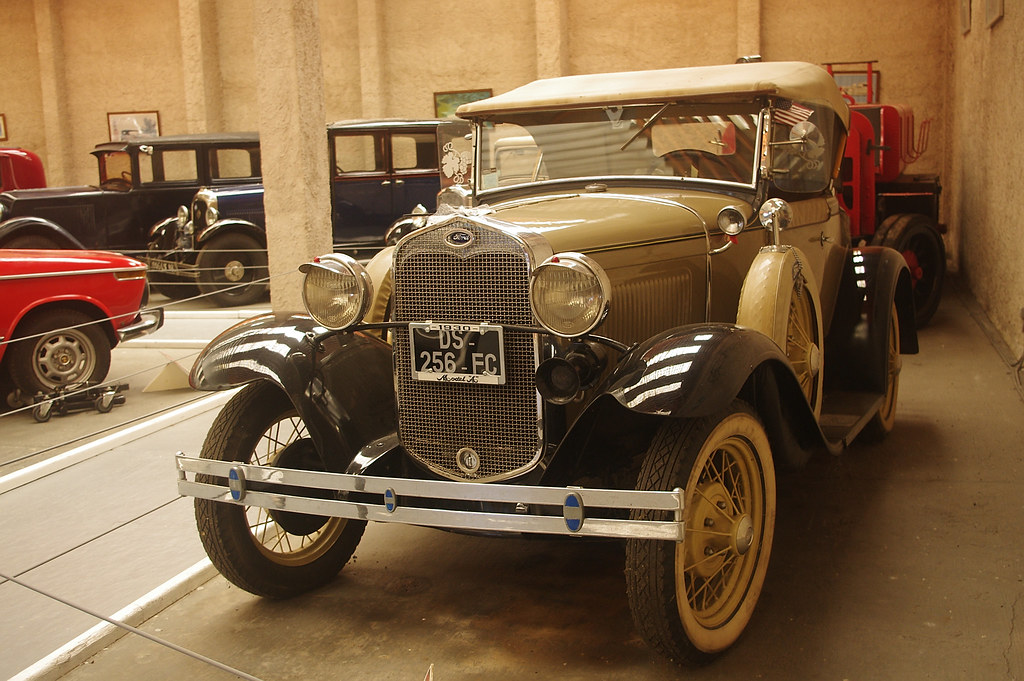
8. **Ford Model A**Long before the Mustang galloped onto the scene, the Ford Model A held its own as the quintessential hot rod for decades, solidifying its place in American automotive lore. Introduced shortly after the groundbreaking Model T, the Model A became a staple for customizers and enthusiasts, a legacy that surprisingly continues to benefit today’s restorers. Its widespread popularity, particularly in the burgeoning rat rod scene, ensures that parts for these nearly century-old machines are still remarkably easy to find.
One of the Model A’s most appealing attributes for a hands-on restorer is its open-wheel construction, a design feature that offers practical advantages. This setup means you don’t have to fret about dinging the fenders while you’re elbow-deep in the engine bay, an often-overlooked perk for those new to wrenching. Furthermore, the engines themselves are frequently open to the elements, simplifying access for repairs and modifications, making the learning curve less steep for a newer gearhead.
While the Model A’s minimalist features might not offer the plush driving pleasure of a modern vehicle, this simplicity is precisely what makes it an excellent choice for a restoration project. Its straightforward mechanical design and lack of complex electronics translate directly into easier repairs and maintenance. This focus on mechanical fundamentals allows restorers to truly understand their vehicle from the ground up, providing an unparalleled educational and rewarding experience.
The enduring appeal of the Ford Model A lies in its historical significance and its adaptable nature, making it a fantastic canvas for both authentic preservation and creative modification. It represents a foundational chapter in American automotive history, and bringing one back to life is a direct connection to that heritage. For enthusiasts seeking a project that combines rich history with practical restoration potential, the Model A is an undeniable standout.
Car Model Information: 2025 Volkswagen Atlas 2.0T SE w/Technology
Caption: 1925 Ford Model T Touring Car
Manufacturer: Ford Motor Company
Production: October 1908 – May 1927
Assembly: collapsible list
Designer: Childe Harold Wills
Class: Economy car
BodyStyle: collapsible list
Layout: FMR layout
Engine: straight-4
Transmission: planetary gear
Wheelbase: 100.0 in
Abbr: on (1912 roadster)
Length: 134 in
Width: 1676 mm
Height: 1860 mm
Weight: convert
Predecessor: Ford Model N
Successor: Ford Model A (1927–1931)
Categories: 1900s cars, 1908 establishments in the United States, 1910s cars, 1920s cars, All articles needing additional references
Summary: The Ford Model T is an automobile that was produced by the Ford Motor Company from October 1, 1908, to May 26, 1927. It is generally regarded as the first mass-affordable automobile, which made car travel available to middle-class Americans. The relatively low price was partly the result of Ford’s efficient fabrication, including assembly line production instead of individual handcrafting. The savings from mass production allowed the price to decline from $780 in 1910 (equivalent to $26,322 in 2024) to $290 in 1924 ($5,321 in 2024 dollars). It was mainly designed by three engineers, Joseph A. Galamb (the main engineer), Eugene Farkas, and Childe Harold Wills. The Model T was colloquially known as the “Tin Lizzie”.
The Ford Model T was named the most influential car of the 20th century in the 1999 Car of the Century competition, ahead of the BMC Mini, Citroën DS, and Volkswagen Beetle. Ford’s Model T was successful not only because it provided inexpensive transportation on a massive scale, but also because the car signified innovation for the rising middle class and became a powerful symbol of the United States’ age of modernization. With over 15 million sold, it was the most sold car in history before being surpassed by the Volkswagen Beetle in 1972.
Get more information about: Ford Model T
Buying a high-performing used car >>>
Brand: Ford Model: Model A
Price: $49,364 Mileage: 4,648 mi.
Read more about: Why the 2025 Ford F-150 Continues Its Reign as America’s Undisputed Truck King
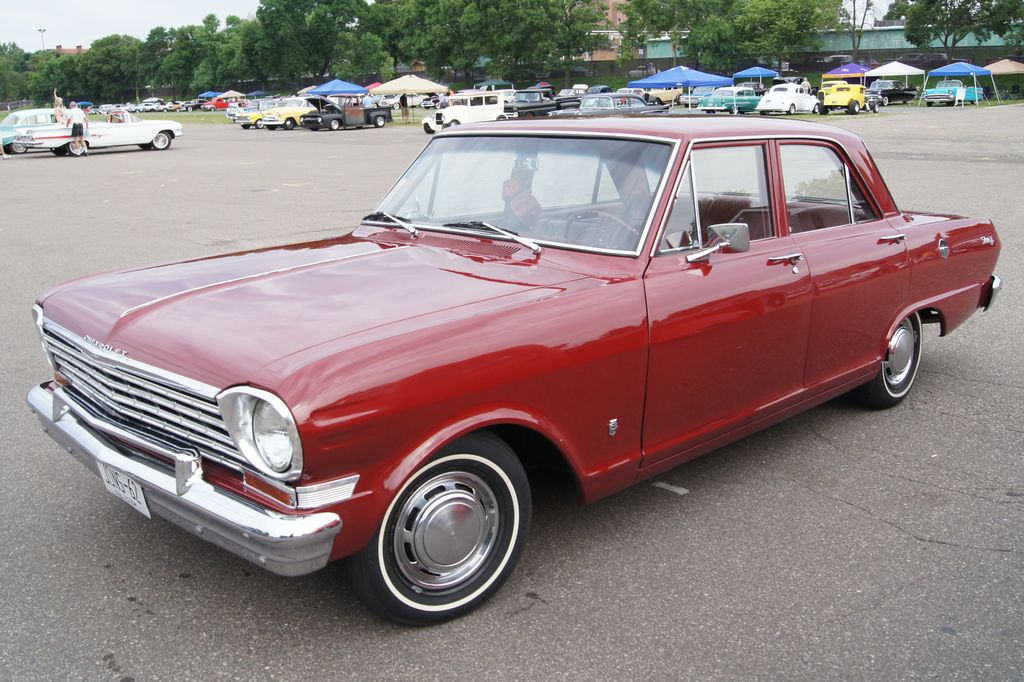
9. **Chevy Nova**For those who admire the powerful lines and performance of a Chevelle but are struggling to find one within their budget or simply prefer a slightly different aesthetic, the Chevy Nova emerges as a brilliant alternative. This compact Bow Tie muscle car, while a bit smaller than its Chevelle sibling, was originally positioned as a more entry-level vehicle, which often translates directly into a lower acquisition cost for restoration candidates. It provides a similar blend of performance and classic style at a more accessible price point.
Chevrolet produced approximately a million Novas during its run, a testament to its popularity and a significant advantage for aspiring restorers. This sheer volume means that finding a decent example to start your project is considerably easier than with some rarer classic cars. The abundant production numbers also foster a robust market for parts, ensuring that whether you need engine components, interior trim, or body panels, they are readily available.
The availability of parts for the Nova is just as strong as for other beloved Bow Tie muscle car options, eliminating many of the common frustrations associated with classic car restoration. This extensive aftermarket support, combined with its relatively simple mechanical design, makes the Nova an excellent choice for both seasoned mechanics and those looking to develop new skills in the garage. It’s a project car that promises steady progress without endless hunts for elusive components.
Restoring a Chevy Nova is a deeply satisfying endeavor, allowing enthusiasts to infuse a personal touch into a classic American icon. Whether you aim for a factory-correct revival or a modified street machine, the Nova offers incredible versatility. It stands as a prime example of how you can own a piece of muscle car history and enjoy the hands-on process of restoration without stretching your finances.
Read more about: Cadillac Escalade IQ: Beyond the Dash – A Deep Dive into Its Revolutionary Infotainment and Connected Technologies
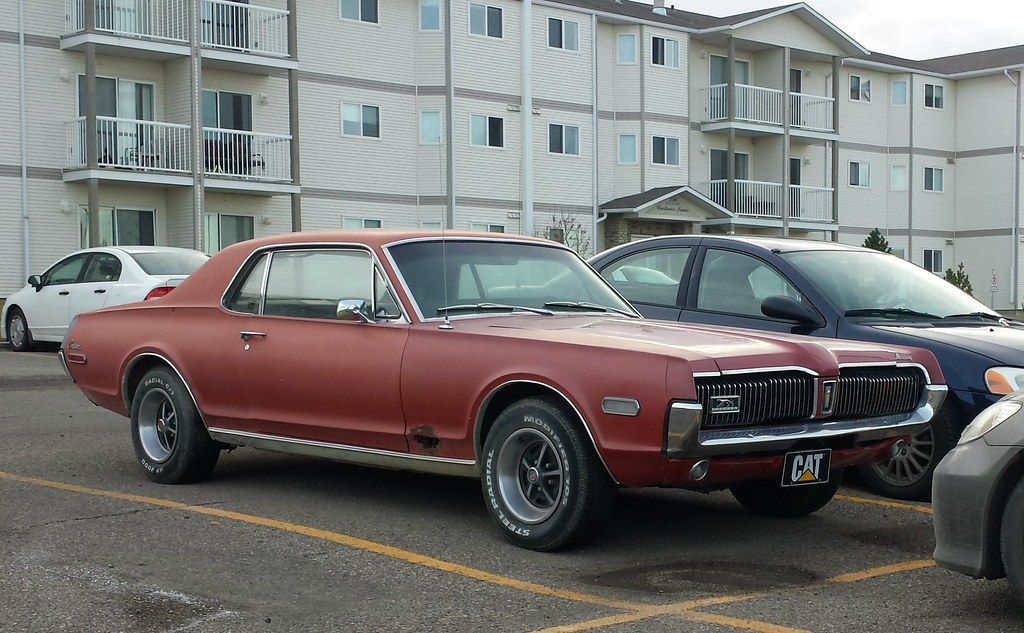
10. **Mercury Cougar**If you’re seeking a classic car that offers the iconic appeal of a Ford Mustang but with an added dash of unique character and a touch of refinement, a first-generation Mercury Cougar could be your ideal restoration project. These vehicles share a significant number of parts underneath the hood with their more famous Mustang cousins, which is a major advantage for parts sourcing and mechanical work. This shared lineage simplifies much of the restoration process, leveraging the Mustang’s vast aftermarket support.
Originally marketed as a more upscale, sophisticated family car, the Cougar quickly revealed its true muscle car spirit once drivers got behind the wheel. It offered a slightly larger platform than the Mustang and could even be outfitted with a potent Ford 390 big block engine, providing serious performance. This combination of subtle luxury and undeniable power makes the Cougar a compelling choice for those who appreciate a classic with dual personalities.
A significant benefit of the Mercury Cougar is its tendency to fly under the radar compared to the perennially popular Mustangs. This often means that finding a Cougar in need of some tender loving care can be a much more affordable proposition. You can frequently pick one up for a fraction of the cost of a comparable Mustang, allowing more room in your budget for the actual restoration work and upgrades.
Restoring a 1968 Mercury Cougar is a rewarding and relatively cost-effective project that yields a car of distinction. Its blend of shared components with the Mustang, hidden muscle car capabilities, and more accessible purchase price makes it an outstanding option for both novice and experienced restorers. It’s a project that delivers style, substance, and the satisfaction of reviving an often-overlooked classic.
Car Model Information: 1995 Mercury Cougar XR7
Name: Mercury Cougar
Caption: 1969 Mercury Cougar (first generation)
Manufacturer: Mercury (automobile)
Layout: Front-engine, rear-wheel-drive layout
ModelYears: 1967–1997,1999–2002
Class: Pony car,Personal luxury car,Mid-size car,Sport compact
Categories: 1960s cars, 1970s cars, 1980s cars, 1990s cars, 2000s cars
Summary: The Mercury Cougar is a series of automobiles that was sold by Mercury from 1967 to 2002. The model line is a diverse series of vehicles; though the Cougar nameplate is most commonly associated with two-door coupes, at various stages in its production, the model also was offered as a convertible and a hatchback. During its production as the mid-size Mercury line, the Cougar was also offered as a four-door sedan and five-door station wagon.
In production for 34 years across eight generations (skipping the 1998 model year), the Cougar is second only to the Grand Marquis (36 years) in the Mercury line for production longevity. 2,972,784 examples were produced, making it the highest-selling Mercury vehicle. During the 1970s and 1980s, the marketing of the Mercury division was closely associated with the Cougar, with promotional materials advertising Mercury dealers as “The Sign of the Cat” with big cats atop Lincoln-Mercury dealer signs. Cat-related nameplates were adopted by other Mercury lines, including the Bobcat and Lynx.
During its production, the Cougar was assembled at the Dearborn Assembly Plant (part of the Ford River Rouge Complex) in Dearborn, Michigan from 1967 until 1973, San Jose Assembly (Milpitas, California) from 1968 into early 1969, Lorain Assembly (Lorain, Ohio) from 1974 until 1997, and at Flat Rock Assembly (Flat Rock, Michigan) from 1999 through 2002.
Get more information about: Mercury Cougar
Buying a high-performing used car >>>
Brand: Mercury Model: Cougar
Price: $10,995 Mileage: 37,589 mi.
Read more about: Gone But Not Forgotten: A Deep Dive Into 12 Pop-Up Headlight Icons We Seriously Miss (And Why Modern Cars Don’t Have Them Anymore)
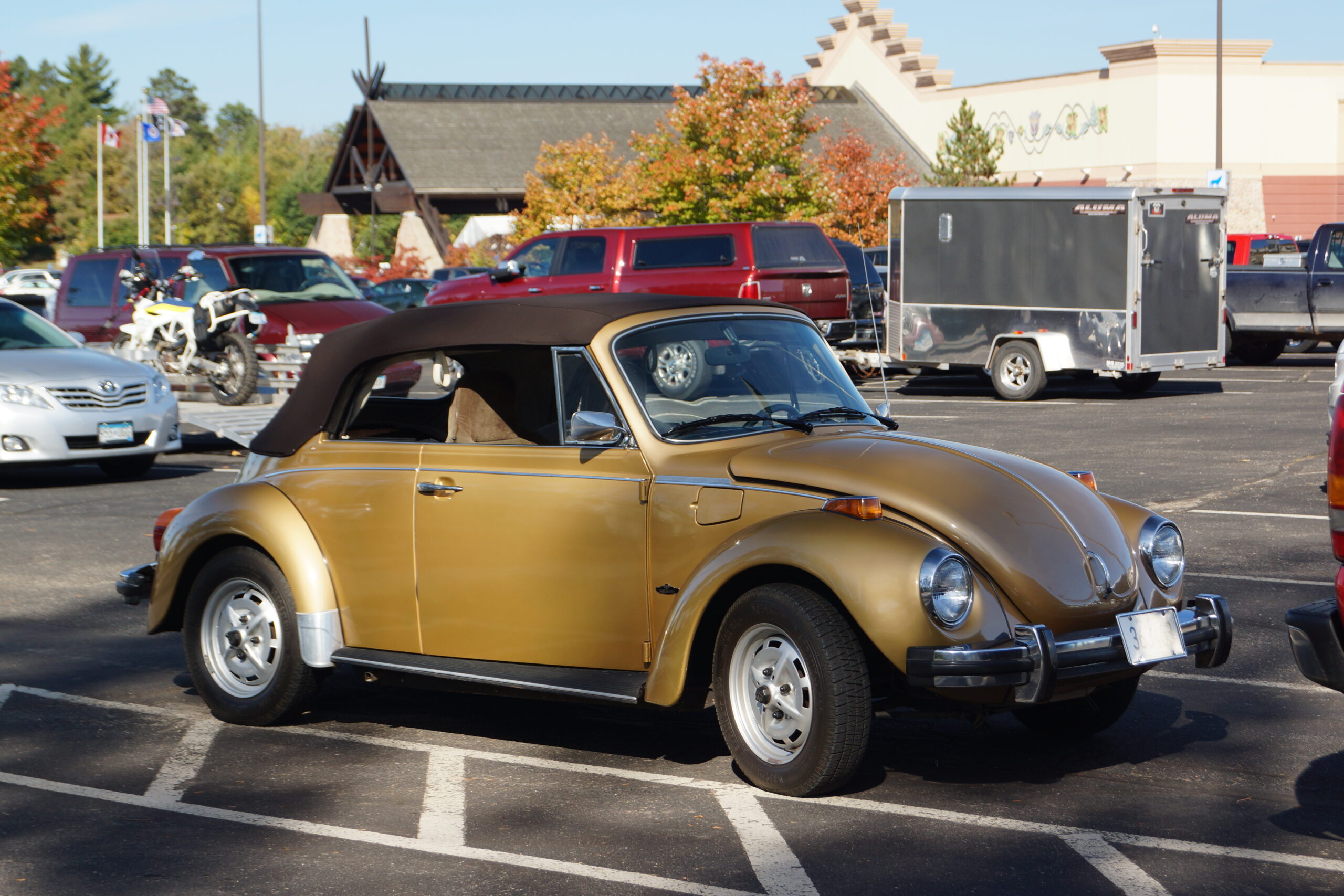
11. **Volkswagen Beetle**While the heart of this list beats with American muscle, the world of affordable classic restoration isn’t exclusively a domestic affair. For those seeking a project that prioritizes sheer entertainment and a quirky attitude over raw horsepower, the Volkswagen Beetle is an internationally beloved classic that fits the bill perfectly. This German car, famously built in Mexico for an extended period, represents an entirely different, yet equally rewarding, restoration path.
The sheer production volume of the Beetle is astounding; literally millions of Bugs were manufactured from the late 1940s through the 1980s. This incredible ubiquity means that finding an example to restore is exceptionally easy, and the aftermarket for parts is incredibly robust. Whether you need engine components, body panels, or interior bits, you’ll find a steady supply of new and used parts, making the restoration process remarkably straightforward and budget-friendly.
The Beetle’s enduring global popularity has also fostered a massive and passionate community of enthusiasts. Online forums, clubs, and specialized shops dedicated to the ‘Bug’ are widespread, offering a wealth of knowledge, advice, and camaraderie. This supportive network is invaluable for guiding restorers through every step of the process, from routine maintenance to full-scale custom builds, ensuring that help is always at hand.
Restoring a Volkswagen Beetle is not just about bringing an old car back to life; it’s about connecting with a global automotive phenomenon. Its simple, air-cooled engine design and uncomplicated mechanics make it an ideal project for beginners. The result is a charming, distinctive vehicle that offers immense driving fun and a constant conversation starter, proving that accessible classic car restoration knows no national boundaries.
Car Model Information: 2012 Volkswagen Beetle 2.5L
Sp: uk
Name: Volkswagen Type 1,”Beetle”
Caption: 1965–1966 Volkswagen Käfer
Manufacturer: Volkswagen
Alt: A front-three quarters view of a pale-yellow Volkswagen Käfer. It features 165/80R15 tires, which shod 15×4. 5″ silver, circular wheels. The Käfer features a beetle-like body, and its window is open. The picture is taken with much greenery in the background, and the photo was edited to give it a more warmer tone.
Aka: List of names for the Volkswagen Type 1
Assembly: #Markets and assembly
Designer: Ferdinand Porsche
Class: Small family car
BodyStyle: Sedan (automobile),convertible
Production: 1938–2003,21,529,464 produced
Successor: Volkswagen Golf Mk1,Volkswagen Gol#First generation (Typ30, 1980),Volkswagen New Beetle
Layout: Rear-engine, rear-wheel-drive layout
Engine: Petrol,Volkswagen air-cooled engine,1192 cc H4,1285 cc H4,1493 cc H4,1584 cc H4
Transmission: manual transmission,Saxomat,Autostick
Wheelbase: convert
Length: convert
Width: convert
Height: 1500 mm
Abbr: on
Weight: convert
Categories: 1940s cars, 1950s cars, 1960s cars, 1970s cars, 1980s cars
Summary: The Volkswagen Beetle, officially the Volkswagen Type 1, is a small family car produced by the German company Volkswagen from 1938 to 2003. A global cultural icon known for its bug-like design, the Beetle is widely regarded as one of the most influential cars of the 20th century. Its production period of 65 years is the longest for any single generation of automobile, and its total production of 21.5 million units makes it the most produced car of a single platform in history and the second-highest of all nameplates manufactured in the 20th century.
The Beetle was conceived in the early 1930s. The leader of Nazi Germany, Adolf Hitler, decided there was a need for a people’s car—an inexpensive, simple, mass-produced car—to serve Germany’s new road network, the Reichsautobahn. The German engineer Ferdinand Porsche and his design team began developing and designing the car in the early 1930s, but the fundamental design concept can be attributed to Béla Barényi in 1925, predating Porsche’s claims by almost ten years. The result was the Volkswagen Type 1 and the introduction of the Volkswagen brand. Volkswagen initially slated production for the late 1930s, but the outbreak of war in 1939 meant that production was delayed until the war had ended. The car was originally called the Volkswagen Type 1 and marketed simply as the Volkswagen. It was not until 1968 that it was officially named the “Beetle”.
Volkswagen implemented designations for the Beetle in the 1960s, including 1200, 1300, 1500, 1600, 1302, and 1303. Volkswagen introduced a series of large luxury models throughout the 1960s and 1970s—comprising the Type 3, Type 4 and K70—to supplement the Beetle, but none of these models achieved the level of success that it did. In 1972, it became the best-selling car of all time, a position it retained for nearly three decades. Rapidly changing consumer preferences toward front-wheel drive compact hatchbacks in Europe prompted Volkswagen’s gradual shift away from rear-wheel drive, starting with the Golf in 1974. In the late 1970s and ’80s, Japanese automakers dominated some markets around the world, which contributed to the Beetle’s declining popularity.
The Beetle remains one of the best-selling cars of all time and is the first to sell over 20 million units. Over its lifespan, its design remained consistent, yet Volkswagen implemented over 78,000 incremental updates. These modifications were often subtle, involving minor alterations to its exterior, interior, colours, and lighting. Some more noteworthy changes included the introduction of new engines, models and systems, such as improved technology or comfort. The Beetle maintains a substantial cultural influence and is regarded as one of the most iconic vehicles in automotive history; its success largely influenced the way automobiles are designed and marketed, and propelled Volkswagen’s introduction of a Golf-based series of vehicles.
Get more information about: Volkswagen Beetle
Buying a high-performing used car >>>
Brand: Volkswagen Model: Beetle
Price: $13,985 Mileage: 27,389 mi.
Read more about: Navigating Vehicle Reliability: J.D. Power’s 2025 Insights and Multi-Source Data for Savvy Buyers
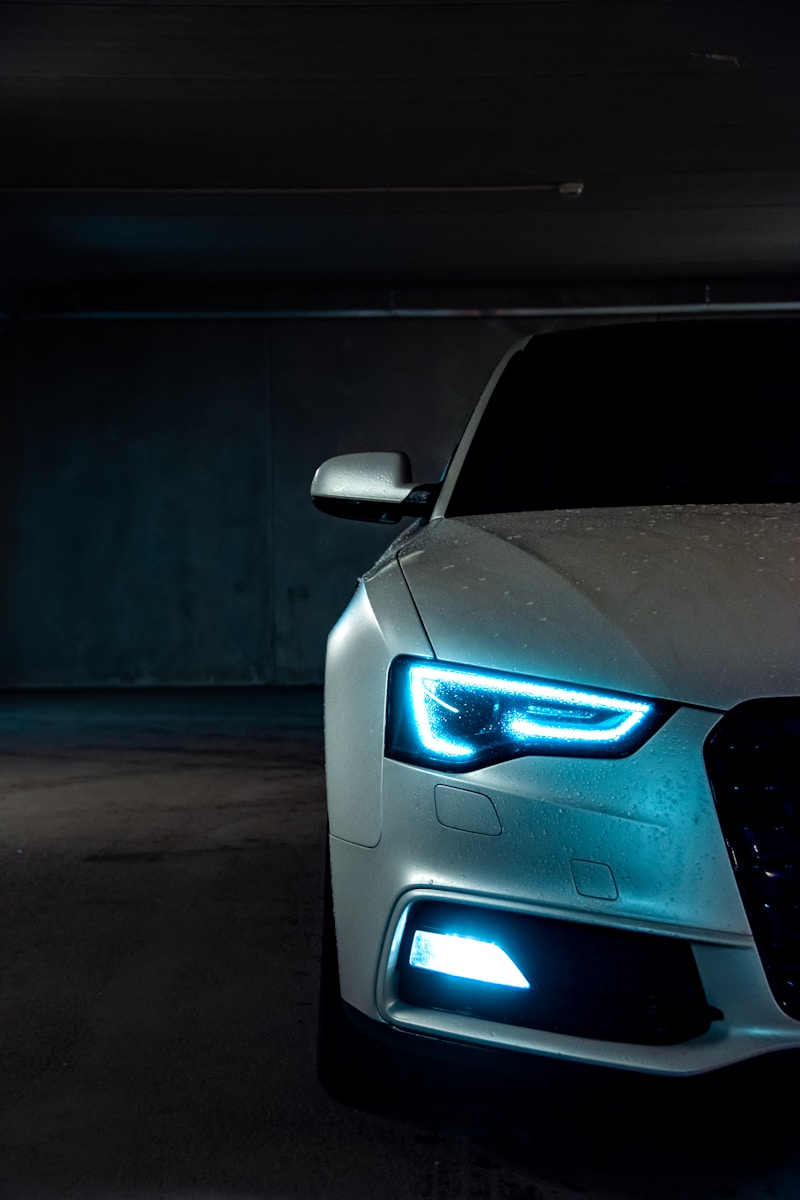
12. **MG MGB**Venturing further into the world of international classics that are surprisingly accessible for restoration, we arrive at the MG MGB, a quintessential British roadster. While it may not have been produced in the astronomical numbers of some American behemoths on this list, and fewer examples might be found stateside, the MGB enjoyed a production run spanning decades without drastic changes to its core design. This consistency in design is a significant boon for restorers.
The MGB has earned a reputation for being tough and reliable, characteristics that make it a less intimidating restoration project. Its relatively simple mechanicals and straightforward construction mean that repairs and overhauls are generally manageable for those with basic automotive skills. Furthermore, its distinctive British styling and nimble handling make it incredibly fun to drive once restored, offering a unique classic car experience that stands apart from the typical muscle car.
Despite fewer examples in the U.S., the MGB’s extended production run and dedicated global following ensure that parts are still quite affordable and available. While some specialized components might need to be shipped from across the pond, the core mechanical and body parts are well-supported by aftermarket suppliers. This logistical consideration is a small trade-off for the affordability and distinctive charm that an MGB offers as a first restoration project.
The affordability of MGBs on the used market makes them an attractive entry point for classic car ownership and restoration. They offer a tangible connection to the golden age of British sports cars, providing a project that is not only financially viable but also immensely satisfying. Restoring an MGB results in a distinctive, enjoyable vehicle that turns heads and delivers a pure, unadulterated driving experience, proving that classic imports can be just as rewarding to revive.
Car Model Information: 1977 MG MGB Roadster
Name: MGB
Caption: 1969 MGB roadster – rollover bar non-standard
Layout: FR layout
Manufacturer: British Motor Corporation,British Leyland,Rover Group
Production: 1962–1980 (original),1992–1995 (MG RV8)
Predecessor: MG MGA
Successor: MG F / MG TF
Class: Sports car
Assembly: Abingdon, Oxfordshire,Enfield, New South Wales,Cowley, Oxford
Categories: 1970s cars, 1980s cars, 1990s cars, All Wikipedia articles written in British English, All articles lacking reliable references
Summary: The MGB is a two-door sports car which was manufactured from 1962 until 1980 by the British Motor Corporation (BMC) (later the Austin-Morris division of British Leyland) and marketed under the MG marque. It was announced and its details first published on 19 September 1962. Introduced as a four-cylinder soft-top roadster, later variants include the MGB GT three-door 2+2 coupé (1965–1980), the six-cylinder sports car and coupé MGC (1967–1969), and the eight-cylinder 2+2 coupé, the MGB GT V8 (1973–1976).
Replacing the MGA in 1962, production of the MGB and its variants continued until 1980, though fixed roof GT models ceased export to the US in 1974. Sales for the MGB, MGC and MGB GT V8 combined totaled 523,836 cars. After a 12-year hiatus, the MGB re-entered production as the heavily modified MG RV8 with a limited run of 2,000 cars before its final replacement in 1995 by the MG F.
Get more information about: MG MGB
Buying a high-performing used car >>>
Brand: MG Model: MGB
Price: $14,999 Mileage: 70,789 mi.
Read more about: 12 Warning Signs Your Mechanic Is Overcharging You: Essential Tips for Every Car Owner to Save Money
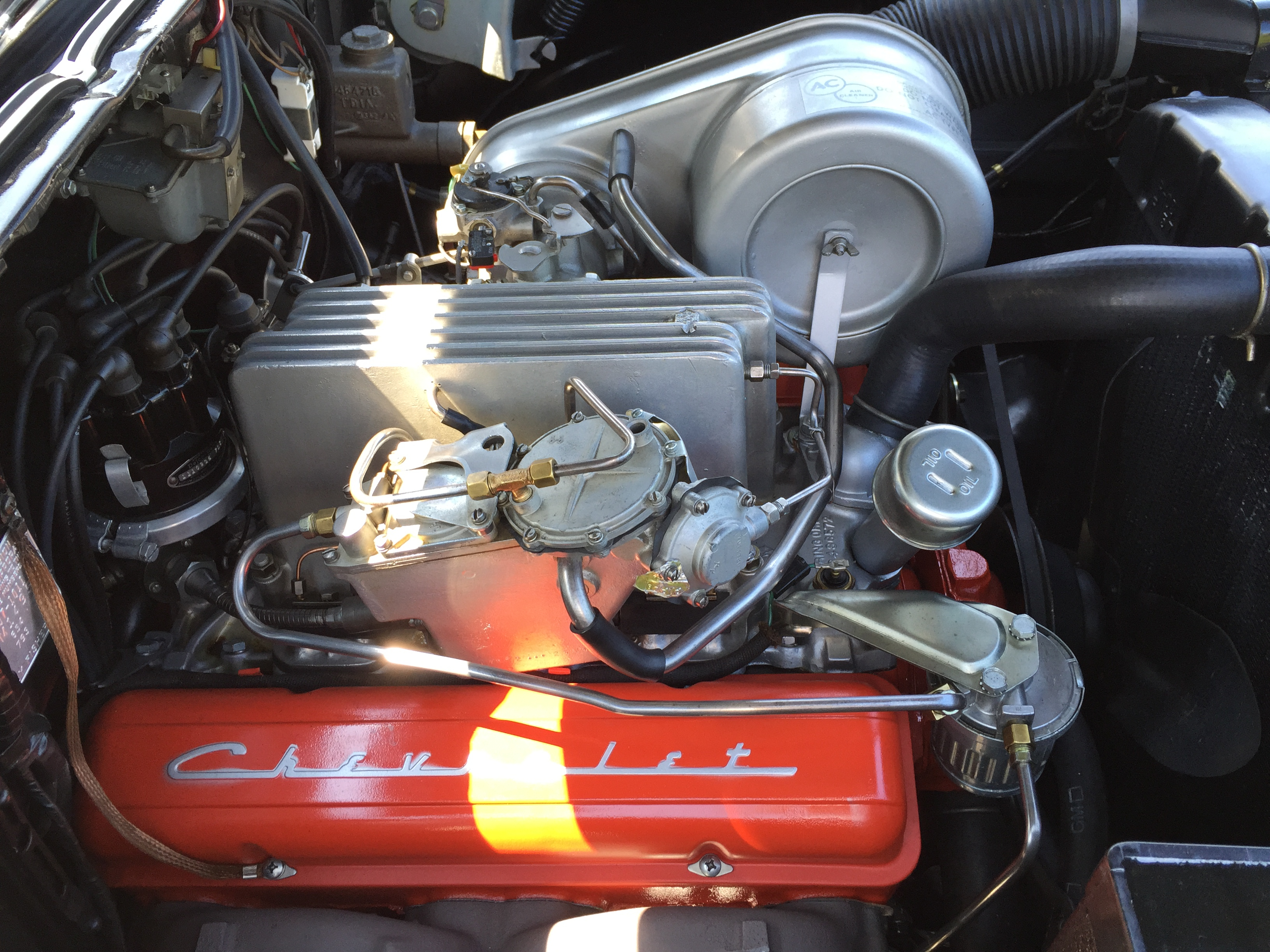
13. **1957 Fuel-Injected Chevy and Chevy Bel Air**Few vehicles embody the optimism and iconic styling of the 1950s quite like the 1957 Chevy, a car that remains one of the most sought-after classics of all time. Among its various celebrated iterations, the Fuel-Injected model, affectionately known as the “Fuelie,” stands out due to its advanced fuel-injection system – a rarity for its time – and limited production. The Chevy Bel Air Sport Coupe, meanwhile, offers a touch of luxury and elegant design, making both compelling choices for a restoration enthusiast.
Restoring a 1957 Chevy, whether a “Fuelie” or a Bel Air, is an immersive project for those with a deep passion for 1950s-era classics. The “Fuelie” models, in particular, captivate collectors who value both performance and historical rarity, presenting a unique challenge and reward in bringing their sophisticated systems back to life. The process allows restorers to appreciate the groundbreaking engineering and timeless aesthetics that defined this automotive era.
A major advantage for anyone contemplating a 1957 Chevy restoration is the abundant availability of parts. Today, the market is rich with numerous original and high-quality replica components, which significantly streamlines the restoration process. This widespread accessibility makes it far easier and often more affordable to source everything needed, from engine components to meticulous interior details, eliminating the major hurdles of finding rare or obsolete parts.
For individuals who love to work on cars and possess a genuine affection for 1950s design, the 1957 Fuel-Injected Chevy or Bel Air Sport Coupe offers an unparalleled restoration experience. With the right parts and a bit of skill, this classic can be resurrected to its former glory, becoming a timeless vehicle that commands attention and admiration wherever it travels. It’s a true piece of American automotive art, ready to be enjoyed for generations.
Car Model Information: 2025 Volkswagen Atlas 2.0T SE w/Technology
Caption: 1957 Chevrolet Bel Air Sport Coupé
Name: 1957 Chevrolet
Manufacturer: Chevrolet
Production: 1956–1957
Transmission: Manual transmission,Powerglide
Engine: 235.5 cid
Abbr: V8 engine
BodyStyle: sedan (car)
Designer: Clare MacKichan
Categories: All articles needing additional references, All articles with unsourced statements, Articles needing additional references from February 2010, Articles with short description, Articles with unsourced statements from November 2017
Summary: The 1957 Chevrolet is a car that was introduced by Chevrolet in September 1956 for the 1957 model year. It was available in three series models: the upscale Bel Air, the mid-range Two-Ten, and the economy/fleet model One-Fifty. A two-door station wagon, the Nomad, was produced as a Bel Air model. An upscale trim option called the Delray was available for Two-Ten 2-door sedans. It is a popular and sought after classic car. These vehicles are often restored to their original condition and sometimes modified. The car’s image has been frequently used in toys, graphics, music, movies, and television. The ’57 Chevy, as it is often known, is an auto icon.
Get more information about: 1957 Chevrolet
Buying a high-performing used car >>>
Brand: Chevy Model: 1957 Fuel-Injected
Price: $49,364 Mileage: 4,648 mi.
Read more about: The Enduring Legacy: Unpacking the Secret History of the Iconic Chevrolet Corvette Z06 from Duntov’s Vision to C8 Mid-Engine Prowess
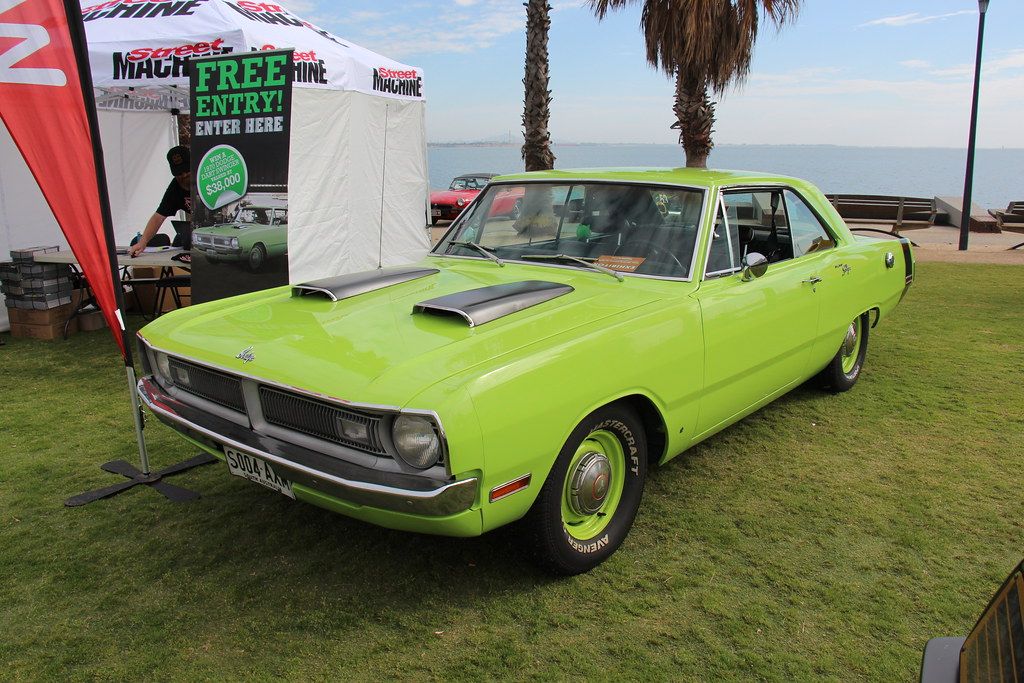
14. **1970 Dodge Dart Swinger**The 1970 Dodge Dart Swinger is a classic car that perfectly blends compact size with an undeniably stylish design, making it an endearing favorite among car enthusiasts and a truly compelling restoration candidate. Its distinctive presence on the road makes it a head-turner, and for those captivated by its charm, restoring one yourself can be a deeply rewarding journey into Mopar history. The Dart’s unassuming demeanor hides a surprising potential for performance and personality.
First introduced in 1967, the Dodge Dart enjoyed a successful production run for nearly a decade, firmly establishing its place in the American automotive landscape. The 1970 version is often celebrated as a pinnacle of the Dart line, representing a superb balance of design evolution and performance. Restoring a 1970 Dodge Dart Swinger offers enthusiasts the unique opportunity to work on a car that beautifully marries nostalgic appeal with significant potential for customization, making each project a personal statement.
One of the most attractive aspects of taking on a 1970 Dodge Dart restoration is the exceptional availability of parts. Given the Dart’s long production history and its popularity, components are relatively easy to locate and, crucially, remain quite affordable. This makes it an ideal choice, especially for first-time restoration projects, as it mitigates the common frustrations of chasing down elusive or prohibitively expensive replacement parts for the engine, body, or interior.
The 1970 Dodge Dart Swinger stands as an incredibly accessible and genuinely rewarding restoration project. Its combination of readily available and inexpensive parts, straightforward design, and significant historical presence makes it a fantastic entry point into the world of classic car restoration. Bringing one of these charming Mopars back to life provides immense satisfaction, delivering a distinctive vintage vehicle ready for years of proud ownership and enjoyable drives.
Car Model Information: 2025 Volkswagen Atlas 2.0T SE w/Technology
Name: Dodge Dart
Caption: 1966 Dodge Dart GT 2-door hardtop
Manufacturer: Dodge
Production: 1959–1976 (US market)
ModelYears: 1960–1976 (US market)
Class: Full-size
Layout: FR layout
Predecessor: Dodge Coronet#Fourth generation (1957–1959)
Related: Plymouth Valiant,Chrysler Valiant,Dodge Phoenix
Successor: Dodge Aspen,Dodge Diplomat,Talbot Tagora
Categories: 1970s cars, All articles with unsourced statements, Articles with short description, Articles with unsourced statements from December 2023, Articles with unsourced statements from May 2025
Summary: The Dodge Dart is a line of passenger cars produced by Dodge from the 1959 to 1976 model years in North America, with production extended to later years in various other markets.
The production Dodge Dart was introduced as a lower-priced full-size model in 1960 and 1961, but became a mid-size car for one model year for 1962, and was then reduced to a compact for two generations, from 1963 to 1976.
Chrysler had first used ‘Dart’ name plates on two Italian styled show cars, in 1956 and 1957, before it became a Dodge model name. The Dart nameplate was resurrected for a Fiat-derived compact car that was introduced in 2012.
Get more information about: Dodge Dart
Buying a high-performing used car >>>
Brand: Dodge Model: Dart Swinger
Price: $49,364 Mileage: 4,648 mi.
Read more about: Goodbye, Boomer Icons? 14 Classic Cars Millennials Just Aren’t Revving Up For

15. **1983-1987 Chevrolet Monte Carlo SS**The 1983 to 1987 Chevrolet Monte Carlo SS carves out a fascinating and often debated niche in automotive history, distinguished by its NASCAR-inspired origins and its indelible association with the 1980s. This particular model developed an intensely loyal following, especially among enthusiasts who appreciated its bold performance cues and a certain ‘rugged, redneck vibe’ that defined its character. While its design might not universally appeal, its iconic status for a specific demographic is undeniable.
The Monte Carlo SS quickly soared in popularity, particularly appealing to those who valued its direct connection to stock car racing and its powerful on-road presence. This strong, albeit niche, fan base fueled its legend, with many owners identifying deeply with the car’s unpretentious yet potent image. For these enthusiasts, the Monte Carlo SS isn’t just a car; it’s a statement, a piece of ’80s Americana that evokes a distinct sense of power and freedom.
If the Chevrolet Monte Carlo SS holds a special place in your automotive dreams, the present moment is an opportune time to embark on a restoration. Its continued popularity has spurred a significant increase in the production of reproduction parts, rendering the restoration process considerably easier than in previous years. This abundance of new components means you can revive a Monte Carlo SS without the arduous task of hunting for rare or exorbitantly priced original parts, whether aiming for a full factory restoration or a personalized custom build.
Restoring a 1983 to 1987 Chevrolet Monte Carlo SS is a uniquely rewarding project, particularly for those passionate about 1980s muscle cars and the rich heritage of NASCAR. With its distinctive appeal, easy access to a wealth of parts, and the ample opportunity for personal expression, the Monte Carlo SS offers a fantastic and accessible pathway into classic car restoration. It’s a chance to preserve and celebrate a divisive yet beloved icon of American automotive culture.
Car Model Information: 2023 GMC Sierra 1500 AT4X
Name: Chevrolet Monte Carlo
Manufacturer: Chevrolet
Production: 1969–1987,1994–2007
ModelYears: 1970–1988,1995–2007
Class: Personal luxury car
BodyStyle: coupé
Layout: FR layout
Caption: 2006 Chevrolet Monte Carlo LS
Categories: 1980s cars, 1990s cars, 2000s cars, All Wikipedia articles written in American English, All articles needing additional references
Summary: The Chevrolet Monte Carlo is a two-door coupe that was manufactured and marketed by the Chevrolet division of General Motors. Deriving its name from the city in Monaco, the Monte Carlo was marketed as the first personal luxury car of the Chevrolet brand. Introduced for the 1970 model year, the model line was produced across six generations through the 2007 model year, with a hiatus from 1989 until 1994. The Monte Carlo was a variant of the Pontiac Grand Prix throughout its production.
From 1970 until 1972, the Monte Carlo rode on the unique “A-Special” platform with the Grand Prix, shifting to the standard A-body intermediate chassis from the 1973 through 1977 model years. For 1978, the Monte Carlo line underwent downsizing, but was still considered a midsized coupe. The rear-wheel drive A-body platform of this generation of Monte Carlo was redesignated as the G-body when GM’s front-wheel drive A-body cars were introduced for the 1982 model year. After an abbreviated 1988 model year, the Monte Carlo was replaced by the two-door Chevrolet Lumina.
For the 1995 model year, the Monte Carlo was revived, replacing the two-door Lumina. It shared the front-wheel drive W-platform with the two-door Grand Prix, and was the largest coupe in the Chevrolet lineup. After the 2002 model year, the Grand Prix coupe was discontinued, the Monte Carlo became the largest two-door model produced by an American auto manufacturer.
In response to declining sales of the model line, Chevrolet discontinued the Monte Carlo after the 2007 model year. During much of its production, the Monte Carlo represented the Chevrolet brand in stock car racing. During the 1980s, the Monte Carlo SS was introduced, featuring aerodynamically enhanced styling; as part of its revival, the Monte Carlo again represented Chevrolet in stock car racing from 1995 through its discontinuation.
Get more information about: Chevrolet Monte Carlo
Buying a high-performing used car >>>
Brand: Chevrolet Model: Monte Carlo SS
Price: $64,995 Mileage: 13,767 mi.
Read more about: From the Silver Screen to the Garage: Uncovering the Fate of Hollywood’s 14 Most Iconic Movie and TV Cars
Bringing a classic car back to life is more than just a hobby; it’s an immersive journey into automotive history, a test of skill, and a deeply personal endeavor. As we’ve seen, the path to owning and restoring an iconic machine doesn’t always lead down a road paved with insurmountable costs or frustrating searches for elusive components. From the foundational Ford Model A to the distinctive 1980s Monte Carlo SS, a wealth of accessible projects awaits the enthusiastic restorer. These vehicles, chosen for their robust aftermarket support, passionate communities, and manageable mechanics, prove that the roar of a vintage engine in your garage is an entirely achievable dream. Whether you’re a seasoned gearhead adding another gem to your collection or a curious newcomer eager to learn, these cars offer a fulfilling and practical entry into the timeless world of classic car ownership, ensuring that the magic of the open road, powered by a piece of history, can be yours to cherish.



